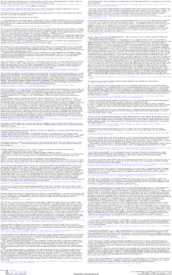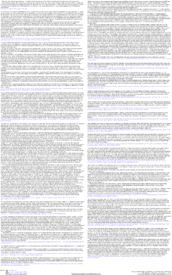No. 729131
Several English-language Wikipedia articles have had major, inexcusable flaws for many years. Among other issues:
• The article about the human anus has an image of a human female's anus and perineum that probably were damaged by some kind of major trauma. Human females beyond developmental stages in the womb should lack an externally-visible perineal raphe, or seamlike union/ridge, in the anogenital region between the anus and the vagina; the bulbospongiosus muscle is separated in them and does not form a persistent, visible midline raphe as it may in males [References: Anatomy & Trauma]. Furthermore, the article about the perineal raphe claims otherwise with no support from any cited source.
• The article about simple columnar epithelium explains nothing about its fragility nor lack of somatic innervation (for pain sensitivity).
The article about anal sex …
• lacks a neutral point of view — an essential component of Wikipedia's presentational philosophy. It fails to present even one _scientific_ opposing perspective, giving readers without exposure to more balanced sources the impression that opposition is limited to irrational religious positions. One such scientific perspective: The human anorectum is very unsuited for many all-too-common receptive activities due to the region's anatomy and physiology. The single short-term benefit, _potential_ pleasure, is greatly outweighed by the many short-term and long-term health risks for the receptive person. [Rationale: Anorectal Risks 1-3]
• fails to mention the normalization of injurious anoreceptive violence in pornography featuring real people.
• does not point out that "hemorrhoid" is an ambiguous term, sometimes referring to pathology and other times to normal anatomy.
• contains a logically-fallacious appeal to nature: "natural" is not necessarily good or desirable, nor is "unnatural" necessarily the inverse.
Those flaws contribute to rampant anorectal abuse and misinformation facilitating it.(find a proctologist)
No. 729132
File: 1612338958117.png (1.07 MB, 2560x4096, anorectal risks 2.png)

The human anorectum is highly unsuited for many all-too-common receptive activities. That is due to the fragility of the anorectal region. Contributing factors include:
• Anatomy — Not far inside there are very delicate and pain-insensate tissues (including simple columnar epithelium, a lining that some enemas and lubricants can inflame and even remove).
• Neuromuscular physiology — The internal anal sphincter is involuntary and relaxes with rectal distension. The external anal sphincter and puborectalis completely relax as a person bears down, causing hemorrhoidal cushions to engorge and increasing the cushions' fragility.
There are many potential traumatic consequences of such activities, including abrasion and tearing; damage to muscle and connective tissues; colorectal perforation; hemorrhoidal disease, such as internal hemorrhoidal prolapse; rectal prolapse (originating from further inside); and inflammation. All of those can lead to even more issues: bacterial infection followed by abscess / fistula / life-threatening systemic sepsis; fecal incontinence; anatomic stenosis (narrowing due to constricting scar tissue called a stricture); and one or more anal skin tags (scar tissue e.g. from a healed tear, a sentinel tag associated with a chronic anal fissure, or a remnant of external hemorrhoidal thrombosis).
No. 729133
File: 1612338986090.png (1.15 MB, 2560x4096, prolapse & incontinence.png)

• Strong, repeated shear force in the anal canal is likely to cause permanent damage to supporting tissues of the internal hemorrhoidal cushions at the least, leading to internal hemorrhoidal prolapse (progressively worsening with cumulative damage from repeated trauma). Since healthy internal and external anal cushions help to maintain fecal continence with a watertight seal, anal canal deformation due to their disease or removal can result in fecal incontinence.
• Internal rectal prolapse (IRP), aka rectal intussusception, is a common finding among asymptomatic individuals. Strong, repeated shear force in the rectum probably does contribute to development of full-thickness external rectal prolapse (aka procidentia) particularly when IRP is present. Internal hemorrhoidal prolapse—among other conditions—also may contribute to rectal prolapse development. Fecal incontinence can be a consequence of rectal prolapse as well.
• Overstretching the anal canal with girthy insertions is likely to cause disruption or fragmentation of one or both anal sphincter muscles, which results in permanent muscle weakening and is associated with fecal incontinence (especially with a damaged or dysfunctional puborectalis muscle). Stretching the anal canal repeatedly with insertions of progressively increasing circumference may cause cumulative muscle damage.
• Trauma—including erotic anoreceptive trauma—can instigate development of numerous other anorectal conditions that may cause or lead to fecal incontinence, including fistulas. Surgical treatments for anorectal conditions also can contribute to development of fecal incontinence.
[References: Prolapse & Incontinence]
No. 729134
File: 1612339016393.png (1.18 MB, 2560x4096, trends & associations.png)

Blatantly injurious erotic anorectal violence—involving a combination of rapid thrusting, a girthy penis/object, and a prolonged duration—is rampant worldwide, facilitated by widespread (willful) ignorance, apathy, and misinformation. It is impossible for resultant anal and rectal injuries and serious/chronic/permanent health consequences to be uncommon due to anorectal fragility relating to anatomy and neuromuscular physiology [References: Anorectal Risks 1-3]. When more than one person is involved such abuse should therefore constitute severely criminal behavior for any penetrative person—especially if significant mental pathology, a strong judgment-impairing drug, etc. are involved.
Pornography featuring anorectal violence can have numerous effects on some viewers. It may serve as inspiration for their own activities, condition them to be aroused by suffering, and contribute to development of related mental pathology: sexual sadism disorder, sexual masochism disorder, and perhaps even psychopathy for younger individuals [References: Trends & Associations]. People with such inclinations, some affiliated with pornography companies, are having a field day with anorectal violence and spreading disinformation. That unrestrained hedonism is promoting societal decadence.
This is happening because the vast majority of humanity never will place a high value upon the good health of at least someone else's anus; too many people do not wish to think seriously about anorectal matters even though the anus is one of our most important body parts. Erotic anoreceptive activities therefore must be universally discouraged, and perpetrators of anorectal violence against another person—at least and especially ones who inspire countless others—must face justice by any means necessary. Justice has not been served in far too many cases — and may be out of governments' hands after too much time has passed.